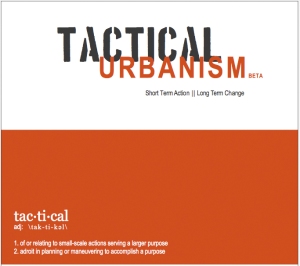A Placemaking Journal
The Future of Planning: Going meta
“In a world where the peddlers of invention dominate progressive discourse, a willingness to acknowledge–let alone heed–the lessons of history and tradition is a truly radical act.” –Scott Doyon
Check the wiki-hip Urban Dictionary (or watch an episode of Community on NBC) and you’ll find the term meta’s common usage on the street is “to characterize something that is characteristically self-referential.” Consult a more conventional dictionary and you’ll see this derived from its earlier (as well as current) use as a prefix meaning “beyond, about.” That is, taking a subject to a higher level.
As a stand-alone term now, it’s typically applied to works of culture — television, music, film and art. But I suggest we expand that usage because, to me, it’s also the best means of expressing the challenge facing anyone concerned about our urban future.
In essence, planning needs to move on. As both a discipline and an action, it needs to better address today’s problems with today’s tools, in the harsh light of today’s resources. And, first and foremost, it needs to do so by referencing the wisdom of our urban traditions.
It needs to go meta.

Conceptually speaking, this charge isn’t altogether unspoken in planning circles. Little by little, urban advocates coming head to head with the new normal are finding it’s not all that new after all. Just as the “new urbanism” was really only new to generations raised on subdivisions and strip malls, and despite our narcissistic need to feel like we’re the first people to ever experience something, the “new normal” is not altogether different from what centuries of previous generations thought of simply as “normal.”
There’s less money to get things done, yet we’ve built thriving, wonderfully livable towns and cities in the past with less relative wealth.
There’s the prospect of energy scarcity yet, in reality, the idea of cheap, abundant energy has most likely been but a momentary blip on an otherwise long-term trajectory of limited resources.
There’s the environmentally and economically toxic fallout of our overly-consumptive lifestyles. And yet, we’ve somehow managed historically to find value and happiness in simpler experiences and possessions.

As Steve Mouzon champions with his Original Green, solutions to many of our current predicaments are embedded in our urban traditions, if we just take the initiative to unlock them. But there’s a problem that goes with such solutions: they’re not plug-n-play. In many cases, they need to be forcibly inserted into our modern world by those with the time, creativity and flexibility to figure out how.
That’s the crux of why planning needs to evolve. Because there are certain aspects of our present condition — especially as it relates to technology and pop culture — that are exclusive to our time and place.
Modern times seek modern tools, best wielded by those willing to embrace and master them. Steve Mouzon may be one of those people but, it must be acknowledged, the bulk of ’em are disproportionately young.
That’s why I see such promise in the current breed of young urbanists: they’re carrying less baggage from the era of illusion. They’re good at working together. They excel at building communities of shared interest. And they’re used to stripped down, technology-enabled, DIY solutions.
In an era of seemingly new realities, they’re the ones who get it.

You can see it as the Next Generation of New Urbanists spawns a new era of discourse and debate at CNU 19 with their Open Source Congress and AuthentiCity design competition. Or in the efforts of Strong Towns, where Charles Marohn and company deliver harsh economic medicine to any community willing to take it. You can even don your Che Guevara beret and embrace the screw-the-system splendor of Tactical Urbanism, an open source book from Mike Lydon, Dan Bartman, Ronald Woudstra and Aurash Khawarzad, or check out “Low-Cost & High-Value Ideas for Cities” on Facebook.
There’s no shortage of examples and yet it’s still just the tip of the iceberg. The bigger picture is a literal, generation-spanning army of potential allies — professionals, activists, non-profits, for-profits, public servants and everyday citizens — with the tools to connect and the wherewithal to re-chart the course of urban planning. Referencing the past, wrangling the present, taking on the future. With relative comfort.
I may not meet their criteria age-wise, being five years beyond NextGen’s loose definition as those under 40, but I’m more than with them ideologically. As are many others with a realist’s bent and similar love and concern for the places we share.
Thus, if age has imparted me with any insight worthy of passing along to those just now getting their feet wet, let it be this:
Go meta, young urbanist. Go meta.
–Scott Doyon








